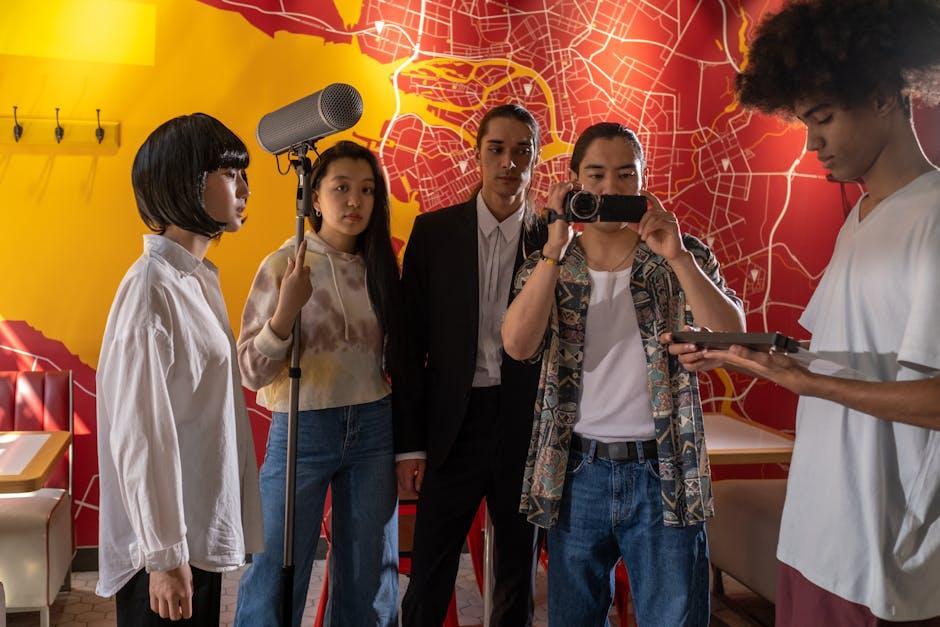In the ever-evolving landscape of cinema, where technology and collaboration intertwine to create immersive experiences, the auteur theory stands as a relic from a bygone era. Originating in the 1940s and 50s, this theory celebrated the director as the singular visionary, the creative genius whose personal touch shaped every frame. Yet, as modern filmmaking increasingly embraces a collaborative spirit, where writers, producers, cinematographers, and digital artists converge, one might wonder: does the auteur theory still hold sway in today’s multifaceted cinematic environment? This article delves into the heart of this debate, exploring whether the notion of the solitary genius can coexist with the intricate tapestry of contemporary film production.
The Evolution of Auteurism in Modern Cinema
The concept of auteurism, which once celebrated the director as the solitary genius behind a film’s vision, has undergone a significant transformation in modern cinema. Today, filmmaking is an inherently collaborative process, involving a symphony of voices including writers, producers, cinematographers, and editors. Yet, the auteur theory persists, evolving to embrace this collaborative spirit rather than oppose it. Directors are now seen not as isolated visionaries but as orchestrators who harmonize diverse talents to craft a cohesive narrative.
Key Elements of Modern Auteurism:
- Collaborative Vision: Directors integrate ideas from a diverse team, allowing for richer storytelling.
- Technological Influence: Innovations in technology enable directors to experiment and refine their signature styles.
- Cultural Sensitivity: Modern auteurs often incorporate varied cultural perspectives, enriching the film’s depth.
This evolution suggests that while the auteur theory has adapted, it remains a vital framework for understanding how individual visionaries leave their mark on cinema, even amidst collaboration.

Collaborative Synergy: Redefining Creative Ownership
In the evolving landscape of filmmaking, the notion of a singular creative vision is being reshaped by the power of collaboration. Collaborative synergy has emerged as a driving force, where diverse voices and talents converge to create a tapestry of ideas and perspectives. This shift challenges the traditional auteur theory, which celebrates the director as the solitary genius. Instead, modern filmmaking thrives on the dynamic interplay between directors, writers, cinematographers, and other creative minds.
- Shared Vision: Collaborative environments foster a shared creative vision, allowing for a richer, more nuanced storytelling experience.
- Diverse Perspectives: Bringing together varied backgrounds and experiences enhances the depth and relatability of the narrative.
- Innovation through Interaction: Creative breakthroughs often emerge from the fusion of different ideas and techniques.
In this context, the role of the auteur is not diminished but rather redefined. The director becomes a facilitator, guiding the collaborative process while weaving individual contributions into a cohesive whole. This reimagined creative ownership not only enriches the film but also democratizes the art of storytelling, inviting a broader spectrum of voices into the cinematic conversation.

Balancing Vision and Teamwork in Filmmaking
In the intricate dance of filmmaking, the role of the director as the sole visionary is evolving. While the auteur theory celebrates the director as the primary creative force, modern filmmaking thrives on collaboration. Today’s films often reflect a harmonious blend of diverse talents, where directors, writers, cinematographers, and editors work together to create a unified vision.
- Shared Creativity: Collaborative environments encourage the fusion of different perspectives, leading to richer storytelling.
- Technological Advancements: New tools and platforms enable teams to communicate and innovate more effectively, diminishing the solitary nature of auteurism.
- Inclusive Storytelling: Diverse voices contribute to more authentic and relatable narratives, moving beyond a single visionary approach.
Balancing personal vision with teamwork can enhance the creative process, resulting in films that are both innovative and cohesive. As the industry continues to evolve, the relevance of auteur theory may lie in its ability to adapt, integrating the strengths of individual vision with the power of collective creativity.

Recommendations for Embracing Diverse Voices in Film Creation
In the spirit of moving beyond the auteur theory, filmmakers can adopt a more inclusive approach by actively incorporating a spectrum of voices and perspectives. Here are some strategies to consider:
- Collaborative Storytelling: Engage writers, directors, and producers from diverse backgrounds to contribute their unique insights and experiences, ensuring a richer narrative tapestry.
- Inclusive Casting and Crew: Prioritize hiring actors and crew members from various ethnicities, genders, and backgrounds to foster a more authentic representation both on and off screen.
- Open Feedback Loops: Create channels for constructive feedback from diverse audiences throughout the production process to ensure that the final product resonates with a wide range of viewers.
By embracing these practices, filmmakers can craft stories that not only entertain but also reflect the multifaceted world we live in, making the art of cinema a truly collaborative endeavor.

